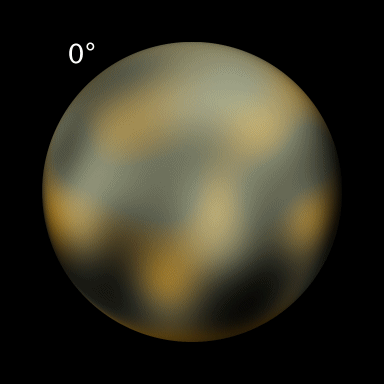
It's more like a range of possibilities. Imagine the layout of the solar system. Pluto is much further away from the sun than Earth. 248 years pass on Earth during one Pluto year.
So, sometimes Pluto is on the same side of the sun as us, and sometimes it is on the far side of the sun from us. Plus, the orbit of Pluto is in a different plane from the planets, so it can get even further away from us.
Pluto is, on average, 39.5 times further away from the sun than Earth.Earth is (on average) 1 astronomical unit (AU) away from the sun, or 149.6 million km.
The tilt of the Pluto's in orbital inclination is 17.16 degrees.One light year is 9.405284 × 10^6 million kmAt closest, Pluto is a mere 4.3 billion km away from Earth. At its furthest, 7.528 billion km.
On average, about 5.914 billion km away.Or between 0.00045 light years (3 hrs, 52 minutes in light time away) and 0.00085 light years (6 hrs 46 min). Average=5 hrs 18 mins.